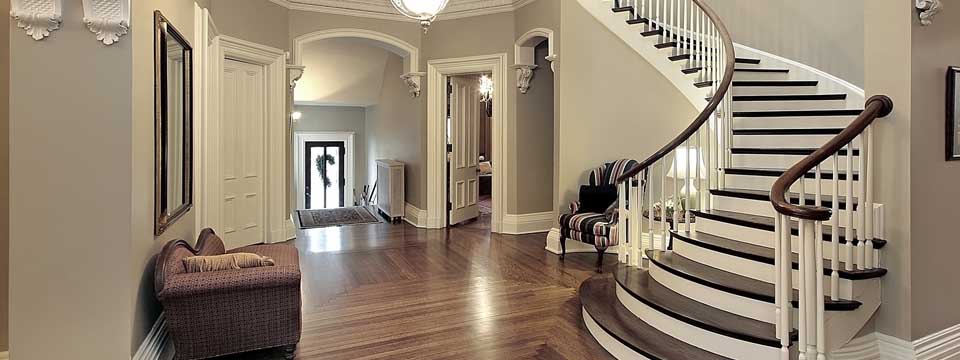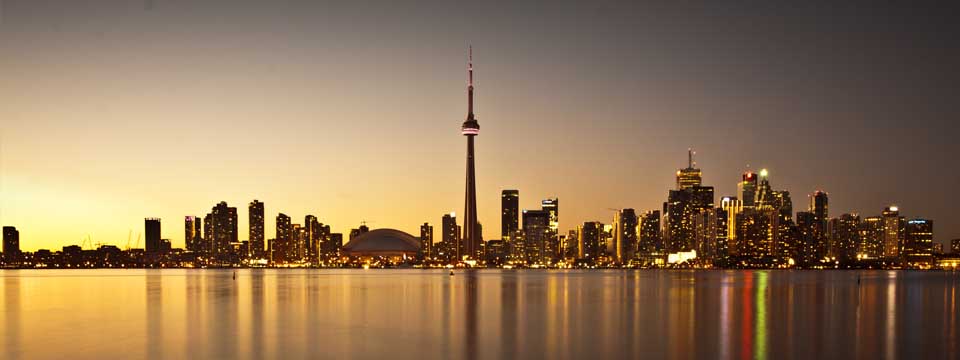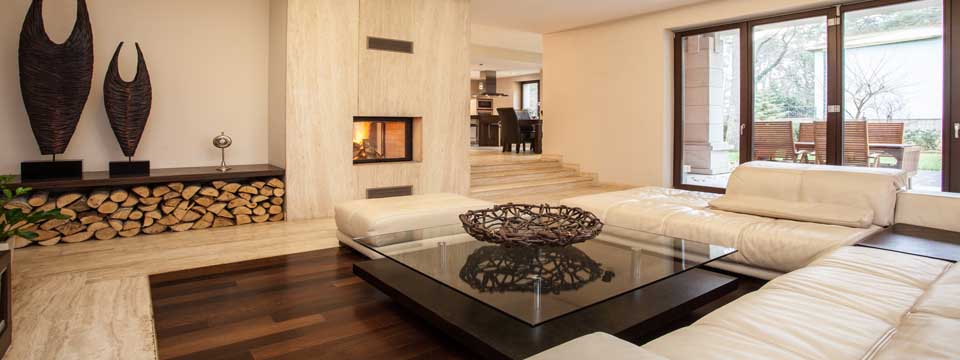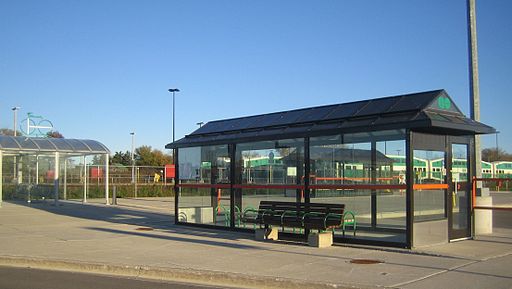Whitchurch-Stouffville Real Estate & Homes for Sale
Whitchurch-Stouffville, Ontario
From Wikipedia, the free encyclopedia
Whitchurch–Stouffville (2011 population 37,628; 2012 est.: 41,200) is a municipality in the Greater Toronto Area of Ontario, Canada, approximately 50 kilometres north of downtown Toronto, and 55 kilometres north-east of Toronto Pearson International Airport. It is 206.41 square kilometres in size, and located in the mid-eastern area of the Regional Municipality of York on the ecologically sensitive Oak Ridges Moraine. Its motto is "country close to the city".
The Town of Whitchurch–Stouffville consists of several distinct communities and the intermediary countryside. The largest urban area is Community of Stouffville proper (2011 pop. 24,866), while other communities in the larger town include Ballantrae, Bethesda, Bloomington, Cedar Valley, Gormley, Lemonville, Lincolnville, Musselman's Lake, Pine Orchard,Pleasantville, Preston Lake, Ringwood, Vandorf, Vivian, and Wesley Corners. The town is bounded by Davis Drive (York Regional Road 31) in the north, York-Durham Line (York Regional Road 30) in the east, and Highway 404 in the west. The southern boundary conforms with a position approximately 200 metres north of 19th Avenue (York Regional Road 29), and is irregular due to the annexation of lands formerly part of Markham Township in 1971.
Between 2006 and 2011 it grew 54.3%, making it the third fastest growing municipality in Canada. Over a decade, the number of private dwellings jumped 78% from 7,642 in 2001, to 13,614 in 2011, with an average of 2.76 people per private dwelling. The town projects a total population of 42,343 in 2013; 55,800 in 2021 (with 73% of the population in the Community of Stouffville), and 62,321 in 2026.
Future growth is governed provincially by the Oak Ridges Moraine Conservation Act (2001), the Greenbelt Protection Act (2005) and the Places to Grow Act (2005). The intent of these statutes is to prevent urban sprawl on environmentally sensitive land and to accommodate future growth in approved settlement areas only. Consequently Whitchurch–Stouffville's future growth is planned as "sustainable development," largely within the boundaries of urban Stouffville alone, which reflects the vision of “small town tradition between the country and the city.”
Demographics
Between 2006 and 2011 Stouffville's population grew 54.3%, second in the province only to Milton at 56%, and far exceeding the provincial average of 5.7%.
In 2006 with a population of 24,390, 18% of residents were immigrants, 80% of whom came to Canada before 1991; the number of visible minorities grew from 4.53% in 2001 to 7.2% in 2006 (and is expected to triple again by 2031). Already by 2010, 34% of the Grade Three children in one of the community's newest school were effectively bi-lingual (i.e., the first language learned at home was other than English). In 2010 the proportion of Whitchurch–Stouffville residents that socialized with people from other cultures on a regular basis was far above the national average.
Of the population 15 years and over in 2006, 58.7% were legally married (and not separated); 26.5% were never married, 6% were divorced, 5.6% were widowed, and 3% were separated (but still legally married). 6% of the population over 15 lived in a common-law relationship. These figures are close to the provincial averages.
As of 2006, Whitchurch–Stouffville's population has been aging faster compared to the larger population of the region or the province. The town anticipates that this trend will change slowly over the next twenty-five years due to an increase of new residents from a broad range of age groups. In 2006, 19.6% of the population (or 5,032 individuals) was children and youth aged five to eighteen; this is expected to decline to 16.4% (or 8,321 individuals) by 2031. Over this same period, the proportion of adults will increase by 115% (19,225 to 41,406 individuals), and the 0-4 age group will increase by 136%.
According to the 2011 Census, English is the mother tongue for 73.4% of Whitchurch-Stoufville residents. Immigrant languages with the most native speakers are Cantonese (3.1%), Italian (3.0%),Tamil (2.0%), and Chinese, not otherwise specified (1.8%).
Economy
In 2011, Whitchurch–Stouffville had an estimated 10,200 jobs (excluding home- and farm-based businesses), 60.9% of which were full-time, 16.5% seasonal, and the remainder part-time. This represents employment growth of 90.6% since 2001, compared to population growth of 65%. Over that same period however the proportion of part-time jobs increased from 16% to 22.6%. While the manufacturing sector represented the largest number of local jobs in 2001, the actual numbers stagnated over the next decade between 1300 and 1600 jobs. By 2011, only 15.6% of local jobs were in the manufacturing sector, compared to 24.7% of jobs (or 2519) in the personal services sector. Golf-related employment accounts for the 34.9% of jobs within the personal services sector.
The majority of employed Whitchurch–Stouffville residents commute to Toronto and its environs for employment. In 2006, 30% of the total employed labour force living in Whitchurch–Stouffville (4,025 of 13,100 people) worked locally or at home, compared to the Ontario average of 56.6%. In 2006, the unemployment rate for Whitchurch–Stouffville was 4.8%, well below the Ontario average of 6.8%.
In 2011, Whitchurch–Stouffville had 19 large-size businesses (100-499 employees), 102 medium-size businesses (20-99 employees), and 570 small business (1-19 employees). The total number of businesses increased by 33.53% since 2001.
The top private sector employers in Whitchurch–Stouffville are:
- Teva Canada, pharmaceutical manufacturing: 310 employees
- Parkview Services for Seniors, 250 employees
- Southwire, electrical equipment and component manufacturing: 175 employees
- Strategic Information Technology, computer and communications equipment and supplies: 160 employees
- K-Line Group, electrical power generation: 120 employees
- Ontario SPCA, 120 employees
- Hanson, concrete pipe manufacturing: 105 employees
- King Cole Ducks Processing: 100 employees
- Stock Transportation Ltd., school and employee bus transportation
- Tam-Kal, sheet-metal manufacturing for HVAC industry
- Wal-Mart Supercentre
Whitchurch–Stouffville is York Region's largest "mineral aggregate resource area;" these gravel sites and designated resource areas are located north and south of Bloomington Road, and all lie within the boundaries of the Oak Ridges Moraine. Under the Oak Ridges Moraine Conservation Act (2001), future aggregate resource operations must meet stringent review and approval standards.
In 2001, 20,406 acres (8,258 hectares) of land in Whitchurch–Stouffville was dedicated to farming; 45% of the farms were between 10 and 69 acres (280,000 m2) in size; 25% focused on "other animal production," (792 horses and ponies on 50 farms) and 24% in greenhouse, nursery and floriculture production. Gross farm receipts for 2000 were $27,182,691; gross forestry receipts (once the backbone of Whitchurch Township's wealth) were $59,098.
Since 2009, the town's economic development strategy has focused on small and large knowledge-based industries, agricultural and environmental services, and not-for-profit organizations. Whitchurch–Stouffville is home to two internationally respected, church-based non-governmental service organizations: Emmanuel International Canada, EMAS Canada and Christian Blind Mission - Canada (CBM), all located on Stouffville Road near Kennedy Avenue.
Transportation
Motor traffic is served primarily by Ontario provincial Highway 48, Highway 407, and Highway 404, which are in turn complemented by a network of regional roads that form a grid pattern across the town. In 1994, a plan to connect urban Stouffville directly toHighway 401 via the proposed East Metro Freeway was canceled in large part due to the concerns of residents and the work of the Rouge River activist groups.
Whitchurch–Stouffville is traversed by two railway lines: One is Canadian National Railway's primary freight corridor connecting Greater Toronto to Northern Ontario and Western Canada, which is being considered for future GO Transit train service with stations in the communities of Vandorf and Gormley (West). The other railway line, formerly the Toronto and Nipissing Railway, is now owned by GO Transit and hosts Stouffville line passenger service to and from Toronto. This line includes two stations in Whitchurch–Stouffville: the Stouffville GO Station in urban Stouffville, and the line's terminus, Lincolnville GO Station, located to Stouffville's northeast. TheYork-Durham Heritage Railway also runs historical trains between the station and Uxbridge on summer weekends.
Until 2012, York Region Transit (YRT) operated two routes (9 and 15) within urban Stouffville, with connection to the Markham-Stouffville Hospital and other Markham routes. With the 2012 York Region Transit Service Plan, the two routes were merged, and the frequency of direct buses to the hospital YRT transit hub was significantly reduced. GO Transit operates bus services in Stouffville, with buses traveling south into Markham and to Union Station, Toronto, as well as services north to the Town of Uxbridge.
Despite excellent access to the GO Transit and York Region Transit systems, the two systems are not integrated. In 2006, only 4.0% of working Whitchurch–Stouffville residents used public transit to get to work (compare 12.9% for Ontario) --up slightly from 3.4% in 2001, and only 3.6% walked or bicycled to work (compare 6.8% for Ontario) --no percentage change from 2001. Excellent public transportation options will become an increasingly urgent issue for Whitchurch–Stouffville as the town continues to grow with residents who commute daily to Toronto (see Economy below).
Festivals & Fairs
The Stouffville Strawberry Festival is a traditional community fair on the Canada Day weekend, which celebrates Stouffville's agricultural heritage.
The Markham Fair is hosted by the Markham and East York Agricultural Society, and supported by both the City of Markham and the Town of Whitchurch–Stouffville (Stouffville south of Main Street was part of Markham Township prior to 1971). The Markham Fair dates back to 1844 and is one of Canada's oldest and largest fairs, hosting upwards of 80,000 visitors. The fair is held on the weekend before Thanksgiving. It is held at the Markham fairgrounds, directly south of the Stouffville town border.
Bruce's Mill Conservation Area hosts an annual Sugarbush Maple Syrup Festival over four weeks in March and April.
In February the Musselman Lake community hosts an annual Winter Carnival at Cedar Beach.
York Region's Spring Forest Festival is held annually during Earth Week (April) in the York Regional Forest, Eldred King Tract, Highway 48 (just south of Vivian Road).
The annual Wine and Food Festival (June) is organized by the Ballantrae Golf and Country Club.
Education
The first schoolhouse in Stouffville was on Church St., just north of Main St., where the United Church building stands. In 1865, the schoolhouse was purchased by the Methodist congregation and moved across the street; the building still exists as a two-family dwelling. Today Whitchurch–Stouffville is home to several public, Catholic, and private educational institutions.
The York Region District School Board has one public secondary institution in Whitchurch–Stouffville--Stouffville District Secondary School—and seven public elementary institutions: Ballantrae Public School, Glad Park Public School, Summitview Public School, Whitchurch Highlands Public School, Harry Bowes Public School, Oscar Peterson Public School, and Wendat Village Public School.
The York Catholic District School Board has three Catholic elementary institutions in Whitchurch–Stouffville: Saint Mark's Catholic Elementary (1965), Saint Brigid Catholic Elementary, and Saint Brendan Catholic Elementary (2012). A Kindergarten to Grade 12 Catholic French school is planned to open in 2014. Catholic school students graduating from Grade 8 are either bused to Brother André Catholic High School in Markham, or transfer to the public system and attend Stouffville District Secondary School.
Stouffville also has four private schools: The Progressive Montessori Academy, Stouffville Christian School, Mindtech Montessori School, and Willowgrove Primary School. In 2009, there were 38 licensed child care centres registered in York, but none were located in Whitchurch–Stouffville; eight child care facilities in Whitchurch–Stouffville have subsidized spaces, and four do not.
As the town continues to expand, new facilities are being constructed to accommodate the increasing number of school-aged children in the community. In 2006, construction was begun on a new facility to replace the aging Stouffville District Secondary School. Located near the intersection of Weldon and Hoover Park Drive (part of a major suburban expansion project), the new high school accommodates approximately 1,500 students.
Not all programs have kept pace with the rapid change. The Education Quality and Accountability school reports for 2009 show 28% of the Grade Three students in one of Stouffville's newest schools first spoke a language other than English at home, but for 2010-11 the school board planned to offer none of its 81 international language programs for elementary pupils in Whitchurch–Stouffville.
Both the proportion of youth participating in higher education, as well as the proportion of adults in Whitchurch–Stouffville who have completed a university program is growing annually and far exceeds the national average. However there are no post-secondary education campuses located in Whitchurch–Stouffville. In 1877, the village of Stouffville established a Mechanics' Institute, which later became the Whitchurch-Stouffville Public Library. Emmanuel Bible College in Kitchener, Ontario had its beginnings in Stouffville in 1940. In 1991 the town came close to securing an agreement with Seneca College to open a new campus in Stouffville. In 2010, the Markham Stouffville Hospital(located in Markham) became a teaching site for residents practicing family medicine at the University of Toronto Faculty of Medicine.
Real Estate Aurora - Real Estate Buttonville - Real Estate Maple - Real Estate Markham - Real Estate Newmarket - Real Estate Richmond Hill - Real Estate Thornhill - Real Estate Toronto - Real Estate Unionville - Real Estate Vaughan - Real Estate Whitchurch-Stouffville - Real Estate Woodbridge










